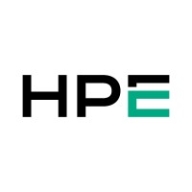

Nasuni and HPE Zerto compete in data management and disaster recovery. HPE Zerto holds an advantage due to its superior disaster recovery capabilities, despite a higher cost.
Features: Nasuni provides a cloud-native approach, manages large-scale data seamlessly, and integrates effective backup and restoration features. It focuses on user-friendliness and data protection. HPE Zerto is recognized for advanced disaster recovery, near-instantaneous recovery times, and strong data protection, aiming to minimize downtime.
Ease of Deployment and Customer Service: Nasuni's cloud-native model simplifies deployment, and customer service supports cloud transitions. HPE Zerto involves a complex deployment process due to sophisticated recovery functionalities, providing high-touch support to facilitate integration.
Pricing and ROI: Nasuni offers a competitive pricing model with lower initial costs, appealing for cost-effective cloud solutions, though ROI varies with cloud operations scale. HPE Zerto, with higher setup costs, is justified by advanced disaster recovery features, enhancing ROI through reduced critical downtime.
Before, it was a huge cost. It was several thousand dollars to do a DR test, whereas now, I click a button.
It saves us a lot of time and gives us the ability to perform other DR plans for other systems.
The return on investment is evident, as Zerto saves more than 60 percent of time in various operations compared to the previous manual processes.
I have never had an issue that was not resolved, and I have never been in a situation where they did not respond.
I would give them a rating of ten because it represents the highest level of support based on the technical knowledge of the support team, response time, and effectiveness of the provided resolutions.
When I open a ticket, I usually get a call within an hour or two.
I would rate it a ten out of ten for scalability.
Customers need to follow good engineering practices for optimal product use.
By adding more hosts and installing VRAs on each, tasks can be efficiently managed.
I rated the scalability as seven because even though the solution can scale, load balancing must be done manually, as it's not automated.
I promptly delete the malfunctioning elements and set them up again to resume replication, ensuring stability.
The ease of use was so good with Zerto that they were able to migrate things much quicker.
It is very reliable.
If I have 350 objects that I am protecting, I would like Zerto to be able to fire them up in one order, rather than having to manually bring them up in a sequence.
If the host has a lot of VMs on it, there may not always be enough time to relocate all of the VMs from a protection group standpoint to other hosts before the replication appliance that Zerto uses to manage that powers itself down.
If HPE Zerto Software has it built-in where we're going to vCenter and you click on it, it will build the VPG and indicate configuration requirements, that would be amazing.
I suggest Nasuni improve their syslog forwarders to support TCP protocol, as it's more secure than UDP, which is plain text and not protected at all.
If you want a good-quality tool that is robust and does a good job for you, you have to pay a higher price to get that, and Zerto is no different.
However, it can become quite expensive when you start looking at the number of workloads you have in the environment and what you would like to do.
Zerto is easier to set up and use, and it's less expensive.
I prefer solutions with lower pricing.
Zerto offers excellent technical support with responsive and helpful experts.
If we were attacked, I could revert to a backup from five seconds before the attack, and no one would know we were attacked.
The replication time and the minor amount of time it takes to sync a new server outside of any of my huge 40-terabyte boxes is ridiculously quick.
The features I find most valuable in Nasuni are the unlimited snapshots, antivirus capabilities, auditing, and ransomware protection.
| Product | Market Share (%) |
|---|---|
| HPE Zerto Software | 6.5% |
| Nasuni | 8.8% |
| Other | 84.7% |


| Company Size | Count |
|---|---|
| Small Business | 91 |
| Midsize Enterprise | 85 |
| Large Enterprise | 193 |
| Company Size | Count |
|---|---|
| Small Business | 3 |
| Midsize Enterprise | 8 |
| Large Enterprise | 24 |
Zerto is used for disaster recovery, business continuity, data migration, and ransomware recovery, providing continuous data protection and near real-time replication. Valued for ease of use, efficient failover processes, and versatile integration, it enhances organizational efficiency, reduces errors, and boosts productivity.
Nasuni is a file data services enterprise focused on assisting firms with their digital transformation, global expansion, and information awareness. The Nasuni File Data Platform is a suite of cloud-based services designed to enhance user productivity, ensure business continuity, provide data intelligence, offer cloud options, and simplify global infrastructure. This platform and its auxiliary services are projected to replace conventional file infrastructure such as network attached storage (NAS), backup, and Disaster Recovery (DR), with an expandable cloud-scale solution. By storing file data in scalable cloud object storage from multiple providers, Nasuni positions itself as a cloud-native alternative for traditional NAS and file server infrastructure. Based in Boston, Massachusetts, USA, Nasuni serves sectors like manufacturing, construction, technology, oil and gas, financial services, and public sector worldwide, offering its services in more than 70 countries.
James J., IT Manager at a marketing services firm, says Nasuni’s management dashboard is helpful because he's able to view all of the different filers at once rather than check each one of them individually. He values the software’s security, reliability, good performance, helpful alerting, and responsive support.
According to a Server Engineering Services Lead at a mining and metals company, Nasuni offers good OR and DR capabilities, performs well, offers data security, and continuous file versioning helps recover from hardware failures.
The Managing Director of IT at a construction company appreciates Nasuni because it eliminates a lot of work that was previously done when managing backing up and restoring data files.
We monitor all Cloud Migration reviews to prevent fraudulent reviews and keep review quality high. We do not post reviews by company employees or direct competitors. We validate each review for authenticity via cross-reference with LinkedIn, and personal follow-up with the reviewer when necessary.